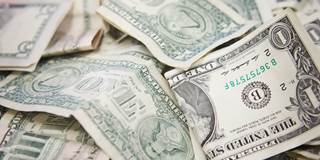Despite the broad global trend toward more flexibility in exchange-rate policy and freer movement of capital across national borders, many countries are lacking dollars. Indeed, in many developing countries, the only thriving market for the past two years or so has been the black market for foreign exchange.
CAMBRIDGE – Immediately after World War II ended, a new phrase entered the economic lexicon: “dollar shortage.” European economies were coping with extensive war-related damage and a broad array of impediments to their efforts to rebuild their industrial base. At the time, the United States was the only provider of capital equipment for reconstruction. So, without access to US dollars, Europe’s economies could not obtain the inputs needed to increase their exports.
With limited, if any, hard-currency (US dollar or gold) reserves on hand, and little prospect for acquiring dollars through export earnings, European economies attempted to shrink their current-account deficits by compressing imports from other (mostly) European countries. The expectation was that import compression would permit them to accumulate sufficient dollars to purchase capital imports from the US.
But, because numerous countries employed the same tactics in an environment in which a broad array of capital controls was in place and official exchange rates were pegged to the US dollar, a parallel currency market flourished. The black market’s premium (relative to the official exchange rate) in most European countries (and in Japan) skyrocketed through the early 1950s, reaching levels that we now tend to associate with “unstable” emerging markets.

CAMBRIDGE – Immediately after World War II ended, a new phrase entered the economic lexicon: “dollar shortage.” European economies were coping with extensive war-related damage and a broad array of impediments to their efforts to rebuild their industrial base. At the time, the United States was the only provider of capital equipment for reconstruction. So, without access to US dollars, Europe’s economies could not obtain the inputs needed to increase their exports.
With limited, if any, hard-currency (US dollar or gold) reserves on hand, and little prospect for acquiring dollars through export earnings, European economies attempted to shrink their current-account deficits by compressing imports from other (mostly) European countries. The expectation was that import compression would permit them to accumulate sufficient dollars to purchase capital imports from the US.
But, because numerous countries employed the same tactics in an environment in which a broad array of capital controls was in place and official exchange rates were pegged to the US dollar, a parallel currency market flourished. The black market’s premium (relative to the official exchange rate) in most European countries (and in Japan) skyrocketed through the early 1950s, reaching levels that we now tend to associate with “unstable” emerging markets.